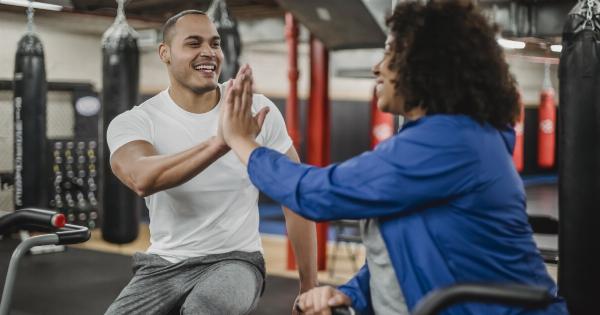If you’ve ever experienced a sleepless night, you’re certainly not alone. According to the American Academy of Sleep Medicine, about 30% of adults in the United States have short-term insomnia, while 10% have chronic insomnia.
Insomnia can be caused by a variety of factors, including stress, anxiety, poor sleep habits, and medical conditions.
Regardless of the cause, insomnia can be a frustrating and debilitating condition, leaving you feeling tired and sluggish throughout the day.
While there are a number of treatments available for insomnia, including medication and therapy, one simple and natural remedy that’s often overlooked is exercise.
The Benefits of Exercise for Insomnia
Regular exercise has been shown to have a number of benefits for those suffering from insomnia. Here are just a few:.
1. Reduced Stress and Anxiety
Stress and anxiety are common causes of insomnia. Exercise has been shown to reduce the levels of stress and anxiety in the body, leading to better sleep at night.
2. Increased Sleep Quality
People who exercise regularly have been found to have higher quality sleep than those who don’t. This includes falling asleep faster, staying asleep longer, and experiencing fewer interruptions during the night.
3. Improved Mood
Exercise has been shown to increase the production of endorphins, the feel-good chemicals in your brain. This boost in mood can lead to better sleep as well.
4. More Energy During the Day
People who suffer from insomnia often feel tired and sluggish throughout the day. Regular exercise can help to increase your energy levels, making it easier to get through the day without feeling exhausted.
The Best Exercises for Insomnia
While any form of exercise is beneficial for those with insomnia, there are certain types of exercise that are particularly effective.
1. Yoga
Practicing yoga has been shown to help with both stress and anxiety, which can lead to better sleep. Additionally, certain yoga poses, such as the corpse pose and the seated forward bend, can help to calm the mind and body.
2. Cardiovascular Exercise
Cardiovascular exercise, such as running or cycling, has been shown to improve sleep quality and reduce insomnia symptoms.
However, it’s important to avoid doing high-intensity exercise too close to bedtime, as this can actually have negative effects on sleep.
3. Strength Training
Strength training, such as weightlifting or bodyweight exercises, can also be helpful for insomnia. This type of exercise has been shown to increase sleep quality and improve overall sleep patterns.
4. Stretching
Stretching exercises, such as those done in a yoga class or on your own, can help to release tension in the muscles and promote relaxation. This can be especially helpful for those with insomnia.
When to Exercise for Insomnia
While exercise is certainly beneficial for those with insomnia, it’s important to time your workouts correctly. Here are some tips:.
1. Exercise during the day
Avoid exercising too close to bedtime, as this can actually make it harder to fall asleep. Instead, try to exercise in the morning or early afternoon.
2. Finish exercising a few hours before bedtime
If you do exercise in the evening, make sure to finish your workout at least a few hours before going to bed. This will give your body time to cool down and relax before bedtime.
3. Avoid high-intensity exercise before bed
While exercise is generally good for insomnia, high-intensity workouts can actually have negative effects on sleep. Avoid doing high-intensity exercise within a few hours of bedtime.
Conclusion
If you’re struggling with insomnia, exercise can be a simple and natural way to improve your sleep.
Whether you choose to do yoga, cardio, strength training, or stretching, any form of exercise has been shown to have positive effects on sleep quality and overall sleep patterns. Just be sure to time your workouts correctly and avoid doing high-intensity exercise too close to bedtime.





























